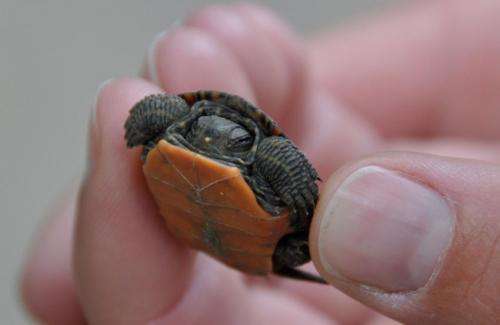Tracking turtles through time, study may resolve evolutionary debate

Turtles are more closely related to birds and crocodilians than to lizards and snakes, according to a study from Dartmouth, Yale and other institutions that examines one of the most contentious questions in evolutionary biology.
The findings appear in the journal Evolution & Development.
The research team looked at how the major groups of living reptiles, which number more than 20,000 species, are interrelated. The relationships of some reptile groups are well understood—birds are most closely related to crocodilians among living reptiles, while snakes, lizards and New Zealand's tuatara form a natural group. But the question of how turtles fit into this evolutionary picture has remained unclear. Are turtles more closely related to archosaurs (birds and crocodilians) or to lepidosaurs (lizards, snakes and tuatara)? Or are these other reptiles more closely related to each other than to turtles?
A growing number of studies examining DNA sequences have suggested a close evolutionary kinship between turtles and archosaurs, but those results were contradicted by anatomical studies and a recent study of small biomolecules called microRNAs. Because microRNAs are viewed by some as excellent evolutionary markers, the conflict between the microRNA and DNA results meant the turtle-archosaur link was viewed skeptically by many.
But the Dartmouth-led team's research suggests the earlier microRNA conclusions were erroneous, and instead indicates that microRNAs and DNA sequences yield a common signal—that turtles share a more recent common ancestor with birds and crocodilians than with lizards and snakes.
Provided by Dartmouth College




















